
Fuel ‘Shortages’ at Turtle Bay?
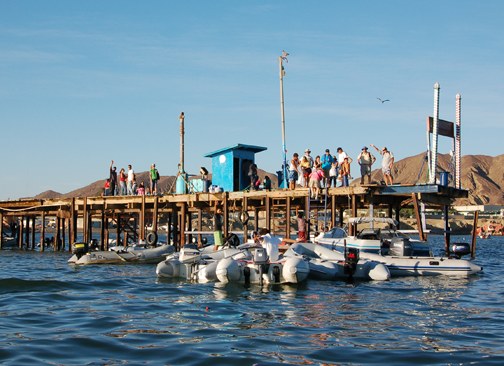
©2008 Latitude 38 Media, LLC
We recently received a letter from Kris and Sandra Hartford of the Edmonton, Canada-based Simpson 417 cutter Nomotos who, shortly after completing a 9-year, 47-day circumnavigation, complained that the El Gordo, Jr. fuel service at Turtle Bay tried to short them on a fuel purchase.
"We ordered exactly 90 gallons of diesel to be delivered by panga to our boat," they wrote. "A delivery slip was presented to us for 337 liters / 90 gallons. A factor of 3.75 on the fuel dock’s liter counter had been used to make the 90 gallon claim. However, the correct factor of 3.7854 yields 89.03 gallons. After loading, we checked our Tank Tender and determined that we had been delivered 82.55 gallons, not 89.03 gallons. That’s a difference of 6.48 gallons or 7.3%. Having used our Tank Tender for some 13 years, we knew it to be reliable and accurate.
"We brought the discrepancy to the attention of señor Enrique Gerardo Castro, the owner. He steadfastly asserted that his fuel dock counter was 100% accurate. So we took one of our standard 5 gallon / 20 liter diesel jugs to his fuel dock and loaded it with exactly 20 liters — as read by his fuel dock counter. It filled to an 1 ½" short of the 20-liter mark cast into our fuel jug."
The Handford’s claim they’re not the only ones to have been shorted, but they stuck to their guns and were ultimately charged for only the amount of fuel they received. But the adjustment in the charge was not made, they report, with a smiling face.
Our questions for those of you who have taken on fuel in Turtle Bay are these: If you carefully checked how much fuel you took on, did you get the correct amount? And if you didn’t, what, if anything, did you do about it?
For bonus points, if you’ve taken fuel on in Mexico, you’re probably aware that some fuel docks charge — and quite a bit, at that — for dockage while taking on fuel. Indeed, in some places it’s less expensive to hire some locals to buy fuel at Pemex, and deliver and decant it on your boat than it is to fuel up at the fuel dock. Our question is whether or not this ‘dock fee’ ticks you off even more than being shorted slightly in some out-of-the-way place such as Turtle Bay?
If there is one happy aspect of this whole thing, it’s that diesel in Mexico — which is subsidized — continues to sell for about half of what it does in the United States.
North Pacific High Shuffles Pacific Cup Deck
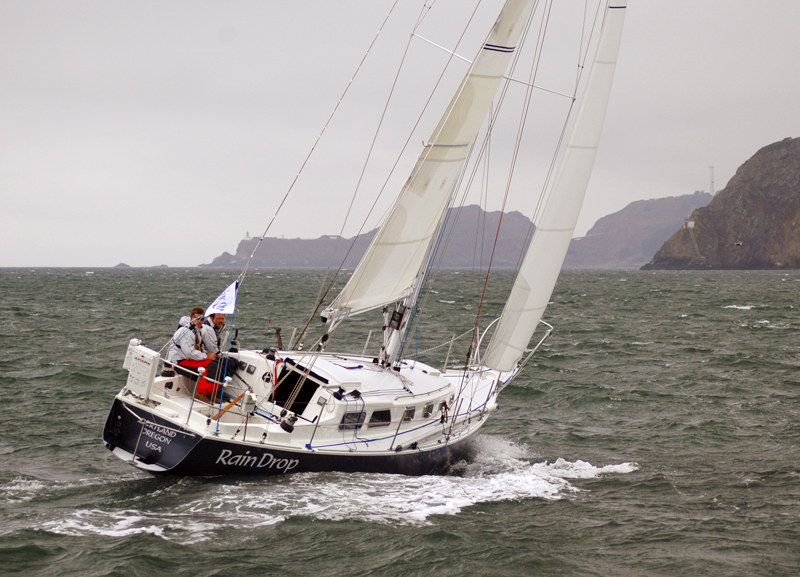
© Latitude 38 Media, LLC
With some of the earliest starters in the neighborhood of their halfway points, the Pacific Cup fleet is experiencing a massive shuffle of positions. Following the satellite tracker over the weekend, it became clear that the wind was progressively clocking and abating, despite what the gribs are saying. As such, many boats in the fleet have jibed — without having even reached their halfway points.
"The high seems to be weakening, and it looks like there’s just been a big drop in pressure," said Pineapple Sails’ Kame Richards, who like us is enjoying watching this one on the computer screen. "Typically the first jibe would be in the last third of the race. I think the motivating reason for jibing is that it’s going to get lighter further north, but if you’re already living and dying by the north [side of the course], jibing is certain death."
The daily standings bear this out. Yesterday’s overall leader, Paul Cayard’s SC 50 Hula Girl, has dropped to the 4th overall spot, and yesterday’s 5th-place Jamani, Sean Mulvihill’s J/120, has plummeted to 16th overall. The latter was one of the boats farthest to north – on the opposite end of the spectrum in their division, the farthest south, Todd Hedin’s E.T. has vaulted from 17th to 7th overall. Joby Easton’s Cascade 36 Raindrop is leading Doublehanded 1. Easton and Bill Huseby looked to be getting lifted into oblivion until they jibed yesterday, carrying with them enough pressure to post a 170-mile day and inch up a spot to 2nd in the overall standings after moving up from 8th the day before.
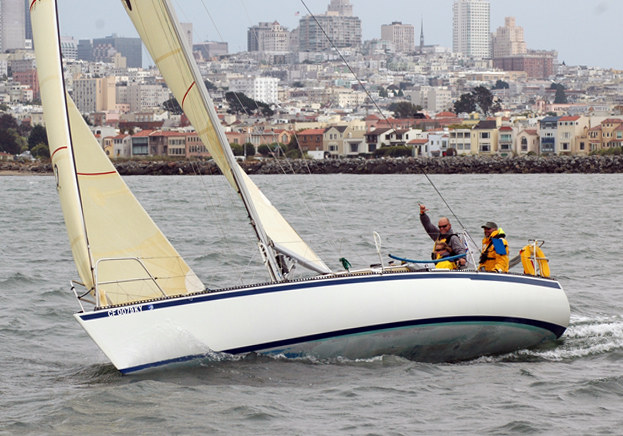
© Latitude 38 Media, LLC
Pre-race predictions of breeze the whole way across, and a sound beating of the earlier starters who had to wait 24 hours for wind, are no longer such sureties. What’s for certain is that this tightly knotted fleet — in Division A, less than two and a half hours separates the top five boats — is paying close attention to the weather.
"It’s surprising to me that they’ve all jibed at once — it’s like they all got the same email at the same time," Richards said, laughing. "It looks like most of them are paying attention to the same information."
Check out www.pacificcup.org to follow this very competitive and not-so-predictable race.
Rich Man, Poor Man
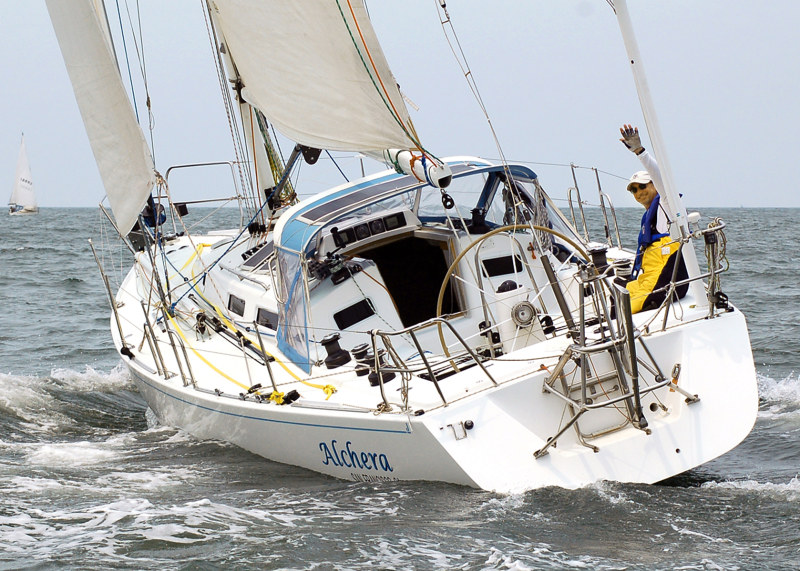
© Latitude 38 Media, LLC
The movement of the North Pacific High, as noted in today’s Pac Cup story, has affected many of the singlehanders as well. The smaller, slower boats are seeing lighter winds, forcing them to head farther south rather than rhumblining it to Hanalei. As Mark Deppe of the J/120 Alchera put it in his log yesterday, "It’s the classic case of the ‘rich get richer and the poor get poorer’. The boats in the front stay in the good wind and continue to go fast, while the boats at the back lose the wind and continue to go slower. Life just ain’t fair, and sailboat racing is no different."
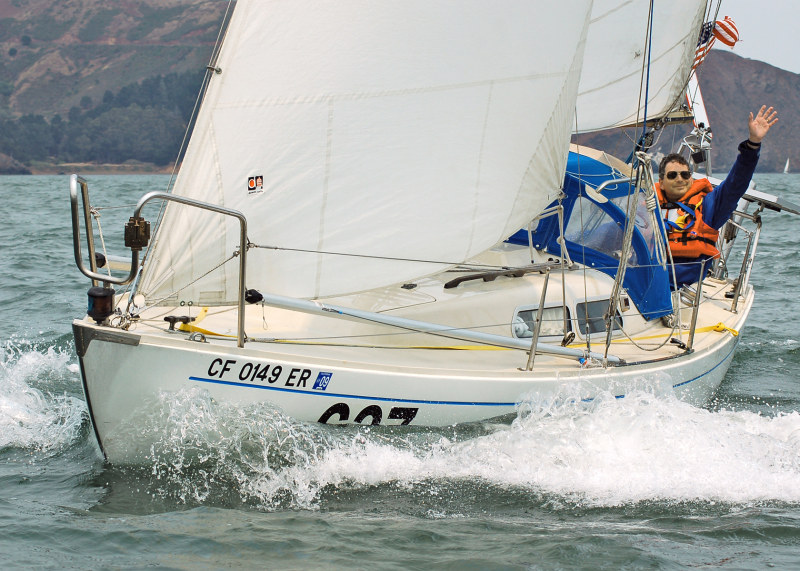
©2008 Latitude 38 Media, LLC
Many of the racers had expressed concern over the silence of Barbara Euser on the Bristol 34 Islander. Euser’s shoreside contact reported this morning that Islander is still in the race but her battery troubles are preventing her from checking in. Apparently the suggestions from the group didn’t solve her problem, but she hopes to start checking in again as soon as she can figure out a fix.
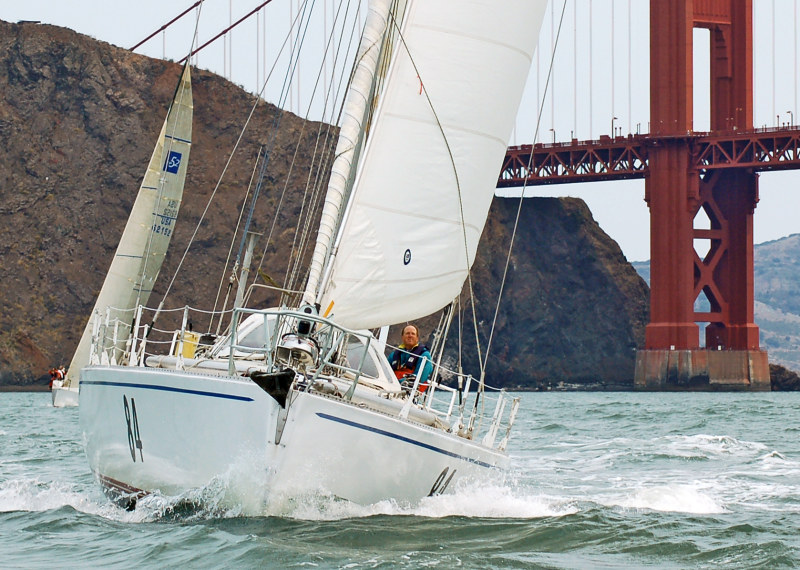
© Latitude 38 Media, LLC
One of the most inspiring aspects of this race is the camaraderie between the racers. While they are indeed racing, they’re also ready to help their competitors with advice and encouraging words. Jeff Lebesch, who has been frustrated with chafe on the spinnaker halyard aboard his Hammerhead 54 trimaran Hecla, reports that Al Hughes on Dogbark has been very supportive in their frequent radio chats. "Al has been encouraging me to work through my problems and stay in the hunt." We wonder if a competitor in any other race would do the same.
Cruisers Slammed by Unexpected Conditions
"The South Pacific Convergence Zone went crazy on July 19," report Robby and Lorraine Coleman of the Honolulu-based Angleman ketch Southern Cross. "Eight boats on their way to Suwarrow from French Polynesia got hammered by 30- to 40-knot winds and even stronger squalls. One boat reported an accidental jibe, and another a knockdown and cracked mast. While they were having strong souhteasterly winds, the wind came out of the northwest where we were at Manihiki 200 miles to the north. It left us on a lee shore, with our stern coming perilously close to the reef and breakers. We tried to raise the anchor at dinnertime on the 18th, but it was severely stuck. Fortunately, we were able to the use line we’d attached to the anchor float to dislodge it it. Whew! We then motored southwest for three hours, and finally hove to. We got underway the next morning under blue skies and light wind. By evening the boats nearing Suwarrow reported winds continuing in the 30+ knot range with rain, and still have 30+ knots of wind and rain just 140 miles to the south of us. So we hove to again last night, not wanting to sail into that kind of mess."
Singlehander Wayne Meretsky of the Alameda-based S&S 47 Moonduster was one of the eight boats in the strong winds on the way to Suwarrow. "There has been plenty of wind — 25 to 35 knots — the last three days, and I’ve had really good daily runs of 203 miles, 196 miles, and should do about another 196 today. Prior to this, I’d never had a 200-mile singlehanded day before. I’ve had the boat completely shut, with even the washboard in place, and I’ve never done that before in all my singlehanding miles. But with so many waves washing over the boat, I didn’t want to risk taking a wave coming into the nav station and wiping out all the electronics. The reports on the net today were that two Seattle-based boats, Mike Scott and Liz Strash’s Seattle-based Cal 40 Argonaut, and the Seattle-based Bristol Channel Cutter Little Wing, took knockdowns yesterday. They didn’t come on the net this morning, but Little Wing reported by satphone that they would both be in Suwarrow soon. I just spoke to Steve and Wendy Bott of the Seattle-based J/44 Elusive, who reported they were just finishing a jibe when a squall hit and caused the boat to jibe back violently. The result was that the gooseneck broke, the mainsail track tore, the clew reef points were pulled out, and a running backstay was busted. They’re already at Suwarrow, which is 400 miles away and where I’m headed. It’s been rough, but my biggest adventure today will be swapping propane bottles. I made some biscuits for lunch yesterday, and when I went to heat some soup last night, there was no more propane in that tank. I’m not complaining, as I’d been using that tank since February 10 in Mexico. By my math, I’ve only got another seven months of propane on board, so I don’t worry too much."
Also caught in the blow was Ron and Mary Ellen Leithiser’s Norseman 447 Island Time. "We’re currently in the thick of things, although conditons seem to be getting better, with the wind down to 25-35 knots and the seas down to 10-12 feet. But breaking waves continue to hammer our boat and fill the cockpit. We’ve already had our engine start switch and some cockpit instrument displays knocked out. But we’re relatively unscathed compared to the others. We know that the following boats all left Bora Bora on July 15: Island Time, Scarlet O’Hara, Elusive, Blue Plains Drifter, Fearless, Little Wing, Argonaut, Windancer, and Tracen J. There are other boats on the same passage, but we don’t know who they are.
How did we all get caught out here? Two days into the passage, the GRIB files suddenly showed wind on the way within 24 hours, but underestimated how hard it was going to blow. At the peak, we had 35- to 40-knot sustained winds, with seas to 20 feet. The sea state was confirmed by BuoyWeather.com. The most eye-opening thing to us has been the unpredictable nature of the weather here in the South Pacific Convergence Zone. Because of the conditions at the anchorage in Suwarrow, we’d decided to continue on to Pago Pago."
